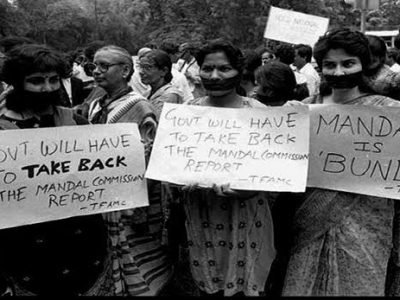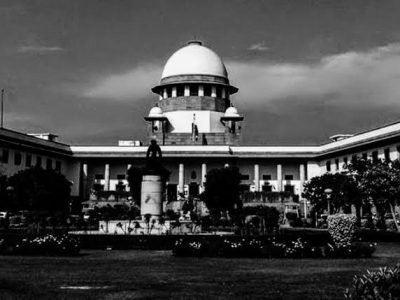Author: Divvela Jyothirmai Anusha, student of Amity University Mumbai, pursuing BBA LLB (Hons.).
INTRODUCTION
In the Narco Theoretical Test, the imagination of the subject was neutralised by semi-consciousness. In this place, it is difficult for him to lie and his responses are limited to knowledge that he already knows about. Professionals inject Pentothal sodium or amytal sodium. The dosage is based on the user’s gender, age, health and condition. The wrong dose will result in someone in a coma, or even death. It is not possible for the subject to speak for itself, but to respond to simple but direct questions. It is believed that the answers are random, since the answers can not be regulated by a semiconscious human.
Specific admissions of semiconsciousness are not admissible in court. A Narco Analysis Test Assessment is reliable, but is not entirely admissible before a court, taking into account and assessing the admissibility of the conditions of the trial. The studies’ results can be used to generate sufficient data, to agree with other evidence, or to support other evidence. However, if the test results are not admitted to a court, it is not possible to justify all other evidence collected during the normal investigation.
For tests, a physiological recorder measuring three indices of autonomic arousal is usually used: pulse rate/blutine strain, breathing and skin conductivity. Most examiners today have computerized reporting methods. With pneumographs around a subject’s chest, breath rate and depth are calculated. Cardiovascular function monitoring is conducted on a blood pressure cuff. Skin conductivity is measured by electrodes applied to the subject’s fingertips (called galvanic skin or electrodermal response).
For recording and interrogation procedures, only part of the polygraph test is used. A standard analysis includes a pre-test process that clarifies and updates each test query. The aim of the preliminary interview is to ensure that subjects understand the problems and make it disappointing for a subject.
Contemporary medical research boons, narco analytics, Brain Electrical Activation Profiles (BEAP), Functional Magnetic Resonance Imaging (FMRI) and Polygraph were used as an alternative to a third degree to use the evidence as testimony from the accused. There are, however, certain laws laid down by the Constitution that must be enforced by all who collects evidence, and all these laws are contradicted by the aforementioned acts and may thus be considered unconstitutional.
While this aspect of privacy is fresh, the concept of privacy is a well-discussed topic in the history of the Indian Constitution. The Indian Constitution does not specifically provide for privacy, but Article 21 of the Indian Constitution, Part III, finds this concept to be embedded in the defense of the right to life and liberty.
The problem at hand is the involuntary administration of the impugned techniques which prompts questions about the defense against self incrimination under article 20(3) of the constitution. In 2004, Smt Selvi and others lodged criminal appeals that were accompanied by additional appeals in 2005, 2006 and 2007, which were taken up collectively by a special leave petition in 2010. The appeal demonstrated the forms in which those convicted or under prosecution from being exposed to Narco-analysis, Brain Electrical Activity Profile (BEAP), Interactive Magnetic Resonance Imaging (FMRI) and Polygraph testing without their permission. The value of collecting facts and acquiring knowledge through traditional methods and avoiding potential illegal activity is also a specified purpose. It has been argued that this method would not create any significant issues with the data collected, and that it will rather help in improving investigative efforts. Another point is that experimental approaches are safer than the regrettable and supposedly common usage of ‘third degree procedures’ by prosecutors. The case touches on big legal concerns, including secrecy, due process and personal liberties.
ISSUES
- It may be a legally valid tool for obtaining information if Narco analysis, brain scanning, RIMFs or polygrams were used.
- If this evidence is diluted in compliance with Article 20(3) of the Indian Constitution and Article 161(2) of the Code of Criminal Procedure (1973), in relation to Civil protections such as ‘freedom of self-infliction.’
- If the operation is deemed a “substantive due process” infringement?
- Whether the compulsory control of these strategies entails an unwarranted intervention into an individual’s mental privacy.
- Whether the individual is entitled, if that provisions exist, to voluntarily administer the procedures in question within the system of criminal justice.
- Whether the knowledge sought is inculpatory or exculpative affects the concepts of protection srom self-inculpation security.
ARGUMENTS
4.1. APPELLANT’S ARGUMENT
- Scientific approaches are a softer solution to the common usage of third degree procedures by investigators and thus breach the human rights granted under Article 20. (3)
4.2. RESPONDENT’S ARGUMENTS
- Citing the value of extracting knowledge, they contended that it will allow the investigation agencies to deter illegal activity in the future even in situations wherein it becomes impossible to collect proof by ordinary means.
- Mentioning clauses of the Code of Criminal Procedures and the Indian Evidence Act to illustrate the expectations of people to comply with investigation agencies.
- The utilization of the collected knowledge can only support the prosecution activities, and cannot be utilized as testimony during the legal proceedings.
- It would help the police find forensic evidence more easily during the inquiry period, thus raising the probability of conviction and the rate of acquittal.
- That the knowledge derived by these methods does not breach Article20, since the research subject doesn’t have to provide verbal responses, thereby slipping beyond the reach of Article 20. (3).
JUDGEMENT
Under Article 20(3) of the Constitution, KG Balakrishnan CJI made the majority of decisions emphasizing the main aspects of self-incrimination. The minority aspect, however, is that, in this whole view, the protection of privacy and proper procedures did not seem to have played an important part, although it is an essential and important aspect. The need for effective questions is likely to be as old as the need for an uncooperative source for man to obtain information, and as persistent as his impatience to shorten any tortuous journey.Physical coercion has been replaced in the annals of forensic investigations with painstaking and time-intensive analysis under the assumption that simple methods lead to fast results. The crime sector has risen more and more in recent years, and demand for additional approaches to detecting discontent and enhancing the effectiveness of questioning has increased.
The minority part, however, needs key constitutional elements such as privacy and due process, and it is our assessment that these variables have been less emphasized. The author seems to agree with the arguments and course of the reasoning and to agree with them, but the decision may have really helped to balance the rationale with a little more focus on privacy. The reason for the reading of 20 has been repeatedly challenged by many high courts (3). The second explanation is that as to the reason for secrecy, there can be no reasonable doubt. The original decision dealt with how the privacy rules were breached by each test. Yet it turned to self-injury in the end.
CONCLUSION
We may conclude that in the judgment of the Supreme Court, all the constitutionality questions surrounding Narco examination, brain imaging, and polygraph testing were finally resolved, prohibiting the unintentional administration of certain tests and calling them inhuman, barbaric and humiliating. It was further concluded that the right to self-incrimination was granted to an investigation and the judicial process. Protection requires not only arrested persons, but also suspects and witnesses. It is a detailed judgment that contains references to different decisions taken in other countries and provides an excellent legal viewpoint on the validity of the research methods at issue that must be tested.
No matter how well it is taken, a decision is always subject to criticism precisely because there is always room for improvement. Although the study is one of the most prominent and trend-setting reviews of its day, it is also important to express constitutional and democratic skepticism. In addition, when it comes to court decisions, this scope is also open to critics. However, in contrast to those in which critics find it difficult to find a difference, this is one of the few decisions. The verdict is an example of a fair and unbiased judgment.
This narrow exception to evidence is due to the idea that the “fruits of the poisonous tree” give the Court’s otherwise gradual decision a shadow. In this case, only for purposes, the same principle was applied.
The protection of the rights of the people with the government is one of the main duties of privileges legally prescribed. As defenders of these freedoms, if we allow any person to pass these tests violently, we will fail. The parties to the decision are convicted criminals who do not recognize the integrity of humanity, but who should not be confined to facts, but who should also extend to the whole population and to future generations.
References
https://www.lawctopus.com/academike/critical-analysis-selvi-v-state-karnatak.a/
http://lawtimesjournal.in/smt-selvi-ors-vs-state-of-karnatak.a/
https://indiankanoon.org/doc/338008/
https://blog.ipleaders.in/right-remain-silent-case-commentary-smt-selvi-v-state-karnataka/MANU/SC/0325/2010
https://www.ncbi.nlm.nih.gov/pmc/articles/PMC3171915/






